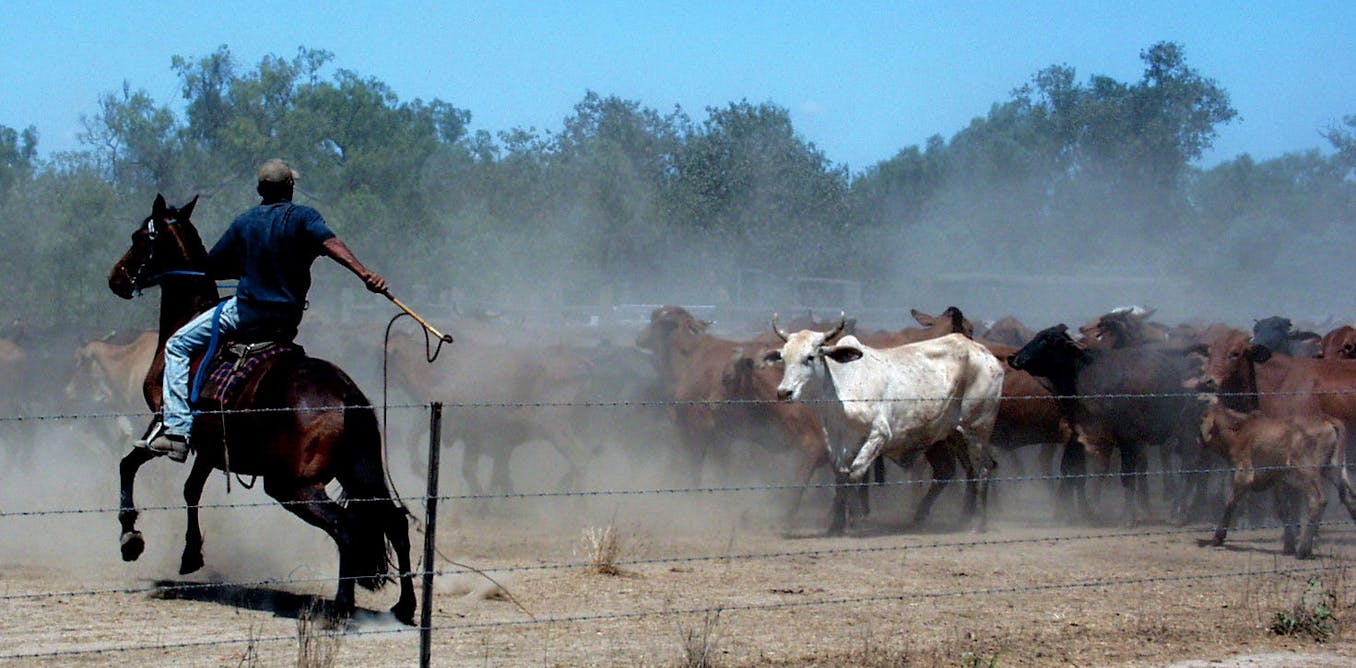Much of the debate over indigenous agriculture in Australia has focused on a contested pre-colonial definition of whether Aborigines and Torres Strait Islanders deserve the English title of “farmer.”
However, this view stifles the true story of Indigenous engagement in Western agriculture. It also fails to recognize the inherent need for the participation of indigenous peoples in the sector.
In 2020, the Australian Department of Agriculture, Water and Environment organized a series of round tables to develop the National agricultural workforce strategy.
The strategy noted the urgency of transforming the agricultural workforce into a “complex, modern and sophisticated sector”.
There is no doubt that the agricultural workforce is changing.
However, there is a disturbing and unsophisticated understanding of the diversity of the workforce within the sector – particularly in terms of Indigenous participation in agriculture.
Read more: Indigenous peoples are essential for conservation – a quarter of all land is in their hands
Agriculture Must Connect with Indigenous Peoples
There is a critical and far too long need for agriculture to connect with indigenous peoples.
This is best demonstrated by indigenous land holdings across the country.
The Australia goalkeeper recently noted that Aborigines and Torres Strait Islanders own up to 54.17% of Australia’s landmass.
This is comparable to National Indigenous Australians Agency estimate of indigenous land ownership, which puts the figure at around 40%.
This vast land ownership of First Nations peoples is an essential component of the continued practice of agriculture in Australia. But despite the fact that indigenous peoples own these vast tracts of land, only 1% of the agricultural workforce identify as indigenous.
This rate is unacceptably low, given 3.3% of the Australian population identify themselves more broadly as indigenous.
The National Agricultural Workforce Strategy identifies solutions to this shortage of Indigenous labor. Solutions such as the promotion of indigenous peoples in agriculture through marketing and the promotion of Aboriginal and Torres Strait Islander leadership in this sector.
However, these proposed strategies do not take into account the broader concerns about inadequate Indigenous representation in the sector.
LARINE STATHAM / AAP Image
Better data and a pipeline of Indigenous graduates
To date, there has been no concerted effort in the agricultural sector to understand the size and scale of Aboriginal and Torres Strait Islander participation today, nor their agricultural production.
For example, the Australian Bureau of Statistics Agricultural Census does not allow farmers to identify themselves as indigenous. Agricultural research and development companies generally do not collect this data either.
There are also pipeline issues regarding Aboriginal participation in the sector. A recent 15-year study of data by one of us (James pratley) demonstrated that universities had a low attraction and retention rate for Indigenous students. Each year, fewer than five indigenous students graduate in agriculture in Australia.
Despite the lack of university graduates, Australia has a growing demographic of Indigenous youth, which could contribute to a much needed workforce in the future.
To encourage indigenous peoples to engage in agriculture, we must demonstrate to the Aborigines and Torres Strait Islanders that they belong to the sector. They need to feel welcome in our universities and TAFE and we need to better support those entering the industry.
Charles Sturt University has developed a Indigenous agriculture initiative draw attention to the lack of indigenous agricultural graduates. It also offers scholarships for indigenous students to study agriculture and / or do postgraduate research on aspects of indigenous agriculture.
This offers indigenous peoples a route into agricultural industries and shows indigenous peoples what opportunities exist.
Attract and retain Indigenous talent
It is also imperative that large agricultural enterprises develop Reconciliation action plans (detailed long-term strategies to significantly advance reconciliation between Indigenous and non-Indigenous peoples within an organization). Large companies also need to start or renew efforts to create a more diverse workforce and supply chains.
On 1,100 Australian organizations have followed this path.
Agricultural businesses such as Incitec Pivot, OBE Organic and Bayer recently developed action plans for reconciliation. Other businesses and agricultural industries also need to make sure their homes are in order.
Reconciliation action plans empower organizations to advance reconciliation throughout their business. This can be done through identified actions such as increasing indigenous staff and staff initiatives. Organizations are accountable for these actions through the reconciliation action plan they develop.
As these reconciliation action plans mature, employers in the agriculture sector will seek Indigenous talent to achieve goals and crucially provide new perspectives.
The contribution and talent of indigenous peoples is essential for the modernization of the agricultural sector. There is a huge opportunity to create employment paths from schools to universities to the food industry at large.
A clear understanding of the size and scale of current Aboriginal agricultural contributions is absolutely necessary.
Industry leaders who strive to build and develop talent pools and develop reconciliation action plans will reap the rewards.
Read more: A law on professional equality between women and men is being revised. Here’s what needs to change











More Stories
Sri Lanka’s post-harvest losses in agricultural sector exceed Rs. 55 billion – – The island
SAU Vice-Chancellor emphasizes effective research in agricultural sector
Agriculture sector threatened by climate change, expert says – Pakistan